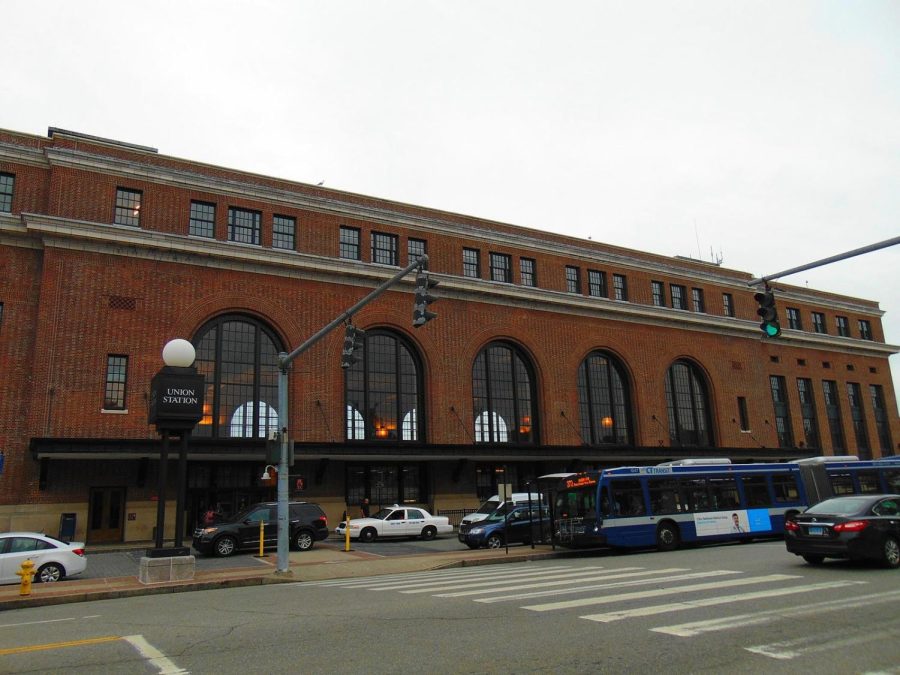City of New Haven receives $25 million FEMA grant for extreme weather protection
Photo courtesy of Wikimedia Commons.
Cars drive by the entrance to Union Station, New Haven, 2018.
The city of New Haven has received a $25 million Federal Emergency Management Agency (FEMA) Building Resilient Infrastructure and Communities (BRIC) grant to support the city’s Inland Coastal Resiliency Project. The grant will be used to better protect Union Station and its neighborhoods from severe weather.
This area, located near Long Wharf, is prone to flooding. Two weeks ago, a large-scale storm that came through caused extensive flooding in the region, further showing a need for the grant.
The FEMA BRIC grant will help New Haven build an underground pipe, a pump and a wall along the Interstate 95 corridor to help protect Union Station and to make it more accessible during storms.
According to New Haven Mayor Justin Elicker, the project is not only key to increasing public safety measures but is also important in stabilizing New Haven’s economy.
“The wall, the pipe and the pump are about climate resiliency,” Elicker noted. “They are about jobs, they’re about economic development, they’re about ensuring vital infrastructure like Union Station remains safe and accessible.” According to Elicker, the project should be finished by 2025.
Governor Ned Lamont also spoke on the project, describing the need to take steps to ensure preparedness in the future. He specifically noted the impact Hurricane Sandy had in 2012.
“The pipes and pumps and burns can prevent an awful lot of disasters going forward,” said Lamont. “‘If it ain’t broke, don’t fix it’ to me is the wrong philosophy. It’s more like ‘stitch in time, saves nine.’”
Elicker, Lamont, Congresswoman Rosa DeLauro, New Haven City Engineer GioVanni Zinn, City Plan Executive Director Laura Brown and other officials made the announcement outside of Union Station on Sept. 19.
According to FEMA’s case study, “Connecticut: Inland Coastal Flood Resiliency Project,” New Haven’s sewershed cover over 800 acres. This region includes downtown as well as its surrounding neighborhoods and has experienced repeated flooding in past years. According to the case study, the flooding has disturbed both the city’s residents and key facilities, one of the major areas being Union Station and the rail yard.
Union Station serves more than 1.7 million customers a year through Metro North and Amtrak, and is the sole regional rail connector between Boston and New York City. This is one of the busiest rail routes for both business and personal travel.
The case study specifically says,“The area’s flooding is due to a low storm sewer capacity underneath Union Station. The combination of sea level rise and increased storm frequency makes this area extremely vulnerable to repeated flooding, posing a logistical and financial risk to the region’s economic output and communal accessibility.”
The study further integrates the need for the city’s Inland Coastal Resilience Flood project with New Haven’s economic stability, noting the city’s historical background as primarily a service economy with Yale University as the largest employer. The report further describes New Haven as having “always been a major railroad hub, as it connects the New York to Boston lines, while also serving as the starting point for trains headed North for Hartford, Springfield and Vermont.”




